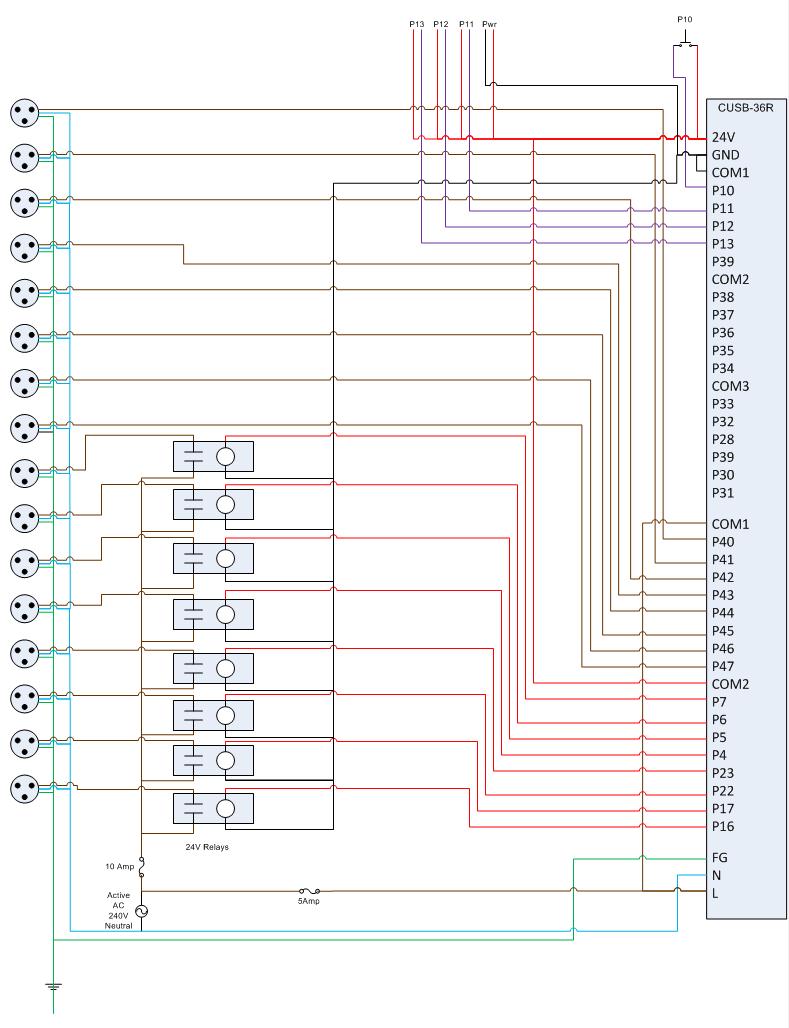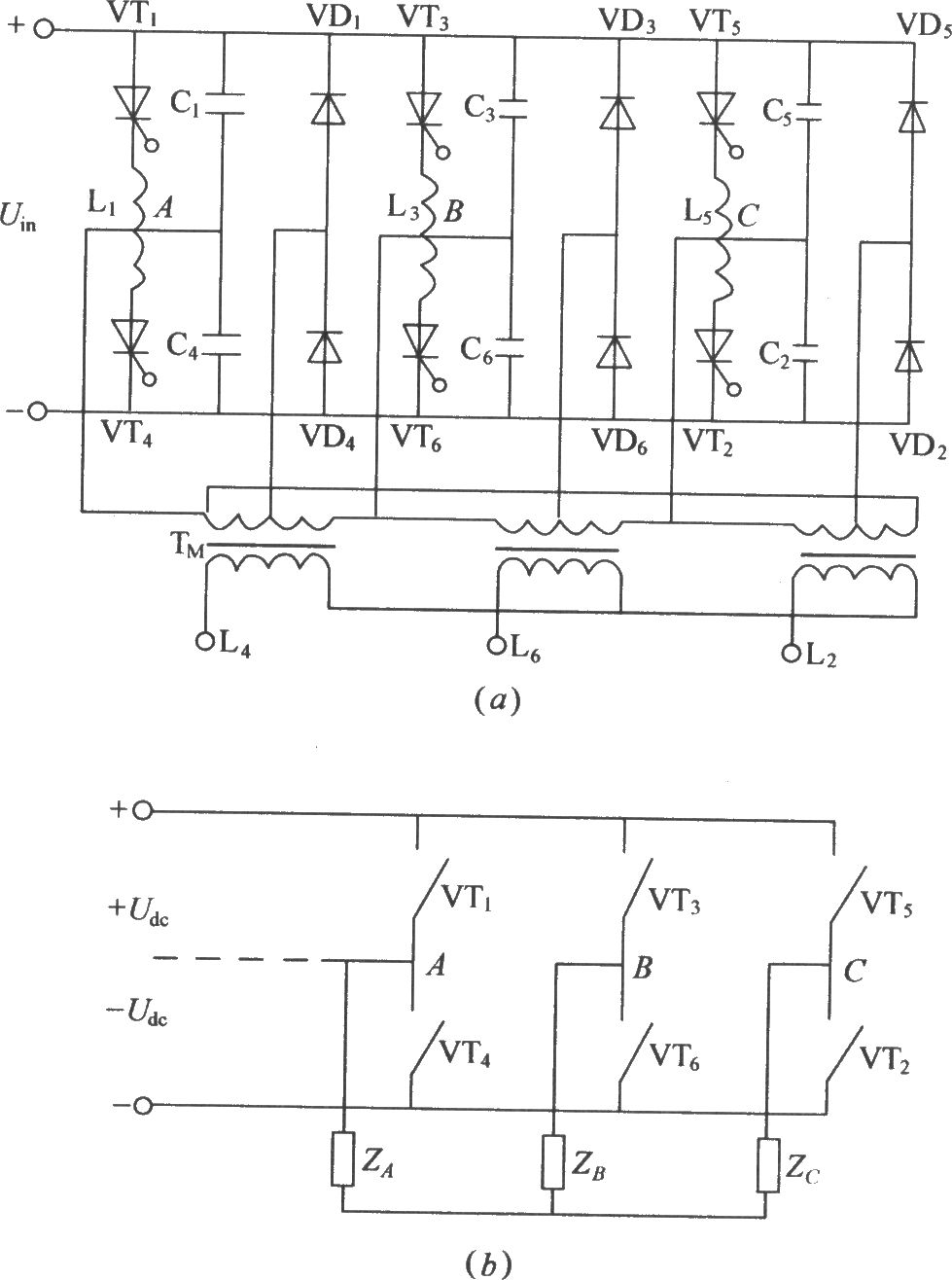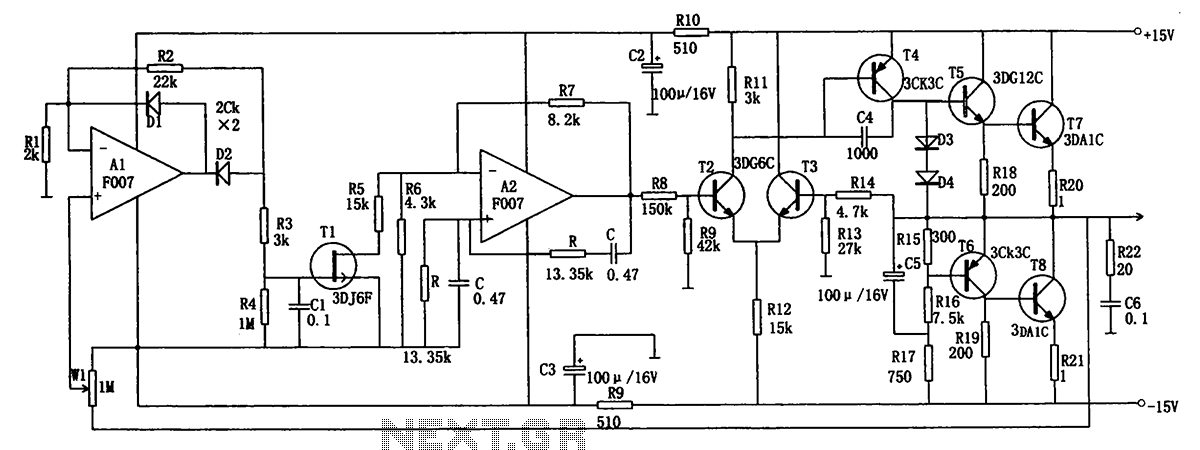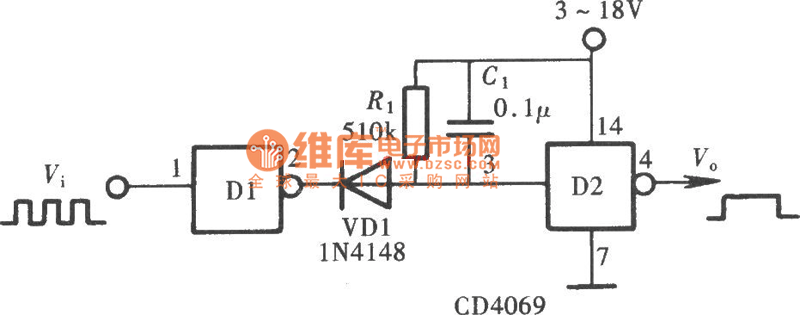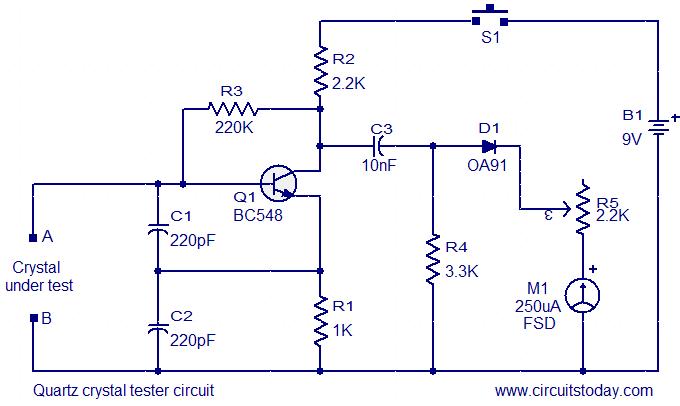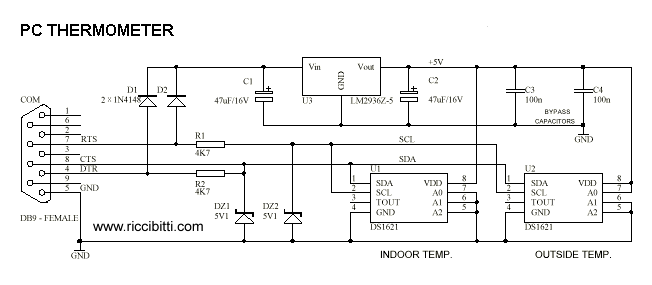
300w power inverter circuit diagram
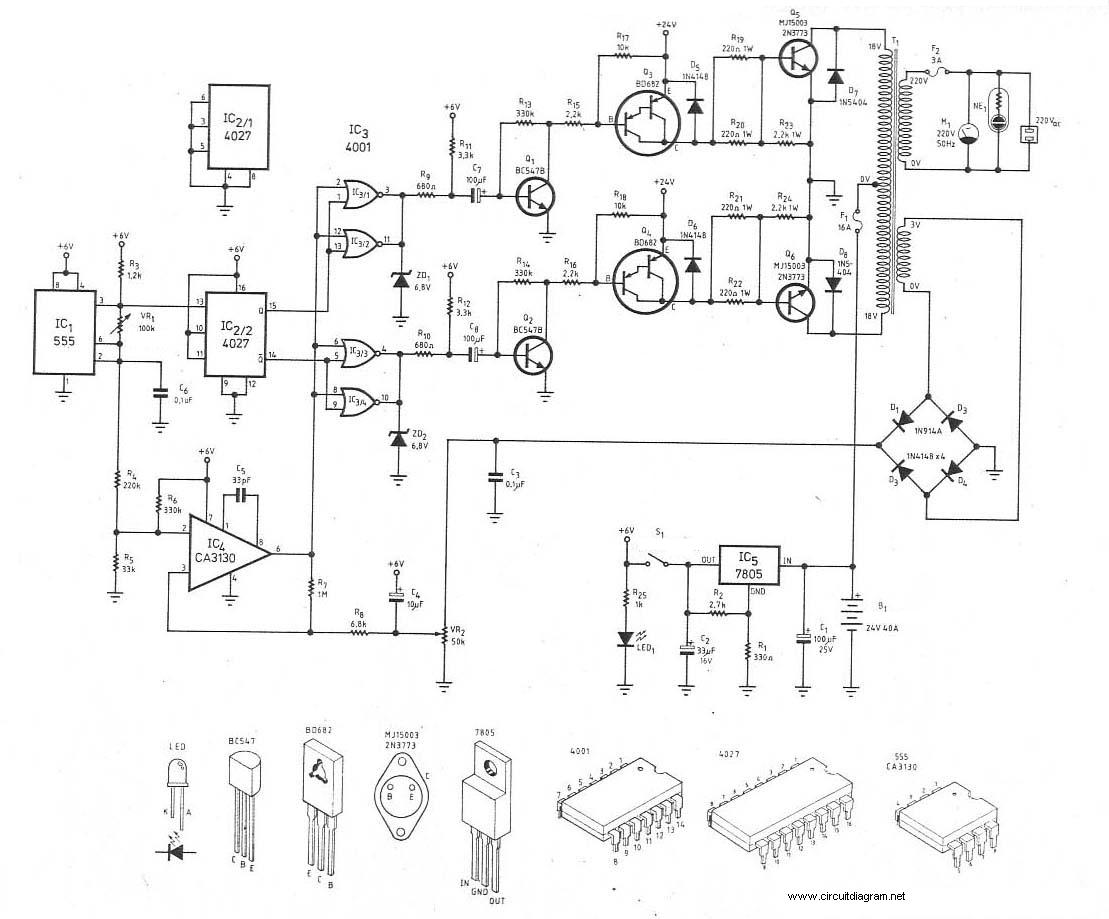
This is the schematic diagram of a 300W power inverter circuit. The inverter utilizes the MJ15003 power transistor for final amplification. If the MJ15003 transistor is difficult to source, it can be replaced with a 2N3773. The inverter is designed to convert 24VDC to 220VAC voltage. Additionally, a PCB layout design for the 300W power inverter is available. There is also a diagram for a 60W inverter circuit that employs a pair of 2N3055 power transistors for final amplification. This circuit is capable of driving medium loads in the range of 40 to 60 watts, operating with a battery of 12V, 15 Ah, or greater capacity. Furthermore, a schematic diagram for a 500W power inverter circuit is included, which uses ten 2N3055 NPN power transistors to amplify the AC signal produced by a multivibrator. The frequency generator or multivibrator is also constructed using transistors. All components for these circuits are readily available. Additionally, there is a schematic diagram for a 100W inverter circuit that converts a 12VDC input to a 220VAC output. This circuit is built using the CD4047 IC to generate a 50Hz sine wave signal, which is then boosted by the 2N3055 power transistor to achieve a high-power output.
The 300W power inverter circuit is designed to efficiently convert a 24VDC input into a 220VAC output, making it suitable for various applications where AC power is required from a DC source. The use of the MJ15003 power transistor ensures reliable performance during the amplification stage. In scenarios where sourcing the MJ15003 is problematic, the 2N3773 serves as a viable alternative, maintaining the circuit's functionality.
The PCB layout design facilitates the assembly of the inverter, providing a clear and organized approach to component placement and soldering. This enhances the reliability and performance of the inverter once constructed. The inclusion of a 60W inverter circuit demonstrates the versatility of using 2N3055 transistors, which are known for their robustness in handling medium loads. Operating on a 12V battery with a minimum capacity of 15 Ah allows for efficient energy use, making it suitable for applications such as powering small appliances or devices.
The 500W inverter circuit expands the capability of these designs by utilizing multiple 2N3055 transistors to amplify the AC signal from the multivibrator. The multivibrator itself, constructed with transistors, generates the necessary frequency for the inverter operation. This configuration allows the inverter to handle larger loads, making it suitable for more demanding applications.
Lastly, the 100W inverter circuit showcases the use of the CD4047 IC, which is capable of generating a stable 50Hz sine wave signal essential for AC applications. The 2N3055 transistors in this circuit provide the necessary amplification to ensure that the output is sufficient for various devices. Overall, these inverter circuits exemplify practical and efficient designs for converting DC to AC power, utilizing readily available components for ease of assembly and application.This is the schematic diagram of 300W power inverter circuit. The inverter uses power transistor MJ15003 for final amplification. You may replace the MJ15003 with 2N3773 if you have difficulty to find MJ15003 transistor. The inverter will convert 24VDC to 220VAC voltage. Here the PCB layout design for 300W Power. This is a 60 Watts inverter circu it diagram which using a couple power transistor of 2N3055 for final amplification. Actually, the circuit is capable of driving medium loads of the order of 40 to 60 watts working with battery of 12V, 15 Ah or greater capacity. This inverter will convert. This is the scheme diagram of 500W power inverter circuit which build using 10 pieces of well-known NPN power transistor 2N3055 to amplify the AC signal produced by multivibrator.
The frequency generator / multivibrator is built based on transistors too. All of the components is easy to gathered from the. This is the schematic diagram of 300W power inverter circuit. The circuit use timer IC NE555 as to produce the wave / AC voltage signal. The signal the fed to the final amplifier to be amplified and to powered up the signal. There are many 2SD1047 transistor to amplify the. Here the schematic diagram of 100W Inverter Circuit which will convert 12VDC input to be 220VAC output. The circuit built based IC CD4047 to generate sine wave signal 50Hz and then the power transistor 2N3055 will boost the signal so that the signal have high power (high electric current).
Then. We aim to transmit more information by carrying articles. Please send us an E-mail to wanghuali@hqew. net within 15 days if we are involved in the problems of article content, copyright or other problems. We will delete it soon. 🔗 External reference
The 300W power inverter circuit is designed to efficiently convert a 24VDC input into a 220VAC output, making it suitable for various applications where AC power is required from a DC source. The use of the MJ15003 power transistor ensures reliable performance during the amplification stage. In scenarios where sourcing the MJ15003 is problematic, the 2N3773 serves as a viable alternative, maintaining the circuit's functionality.
The PCB layout design facilitates the assembly of the inverter, providing a clear and organized approach to component placement and soldering. This enhances the reliability and performance of the inverter once constructed. The inclusion of a 60W inverter circuit demonstrates the versatility of using 2N3055 transistors, which are known for their robustness in handling medium loads. Operating on a 12V battery with a minimum capacity of 15 Ah allows for efficient energy use, making it suitable for applications such as powering small appliances or devices.
The 500W inverter circuit expands the capability of these designs by utilizing multiple 2N3055 transistors to amplify the AC signal from the multivibrator. The multivibrator itself, constructed with transistors, generates the necessary frequency for the inverter operation. This configuration allows the inverter to handle larger loads, making it suitable for more demanding applications.
Lastly, the 100W inverter circuit showcases the use of the CD4047 IC, which is capable of generating a stable 50Hz sine wave signal essential for AC applications. The 2N3055 transistors in this circuit provide the necessary amplification to ensure that the output is sufficient for various devices. Overall, these inverter circuits exemplify practical and efficient designs for converting DC to AC power, utilizing readily available components for ease of assembly and application.This is the schematic diagram of 300W power inverter circuit. The inverter uses power transistor MJ15003 for final amplification. You may replace the MJ15003 with 2N3773 if you have difficulty to find MJ15003 transistor. The inverter will convert 24VDC to 220VAC voltage. Here the PCB layout design for 300W Power. This is a 60 Watts inverter circu it diagram which using a couple power transistor of 2N3055 for final amplification. Actually, the circuit is capable of driving medium loads of the order of 40 to 60 watts working with battery of 12V, 15 Ah or greater capacity. This inverter will convert. This is the scheme diagram of 500W power inverter circuit which build using 10 pieces of well-known NPN power transistor 2N3055 to amplify the AC signal produced by multivibrator.
The frequency generator / multivibrator is built based on transistors too. All of the components is easy to gathered from the. This is the schematic diagram of 300W power inverter circuit. The circuit use timer IC NE555 as to produce the wave / AC voltage signal. The signal the fed to the final amplifier to be amplified and to powered up the signal. There are many 2SD1047 transistor to amplify the. Here the schematic diagram of 100W Inverter Circuit which will convert 12VDC input to be 220VAC output. The circuit built based IC CD4047 to generate sine wave signal 50Hz and then the power transistor 2N3055 will boost the signal so that the signal have high power (high electric current).
Then. We aim to transmit more information by carrying articles. Please send us an E-mail to wanghuali@hqew. net within 15 days if we are involved in the problems of article content, copyright or other problems. We will delete it soon. 🔗 External reference
Warning: include(partials/cookie-banner.php): Failed to open stream: Permission denied in /var/www/html/nextgr/view-circuit.php on line 713
Warning: include(): Failed opening 'partials/cookie-banner.php' for inclusion (include_path='.:/usr/share/php') in /var/www/html/nextgr/view-circuit.php on line 713
